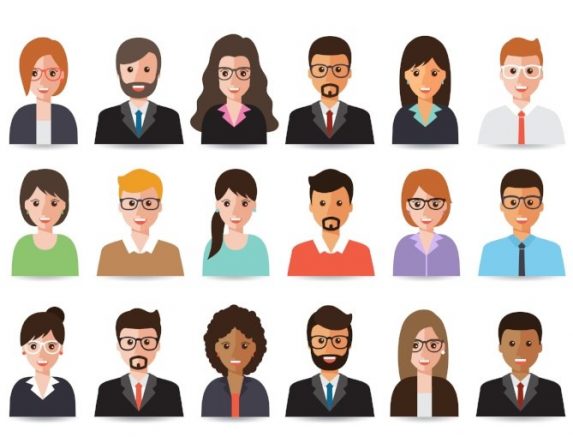What is the Internet of Things (IoT)?
In simple terms, IoT refers to connected devices that work over the internet. But it’s increasingly being known for devices that we interact with like Google Home and Amazon Echo (Alexa). IoT is disrupting existing markets and creating new ones by increasing efficiency and reducing costs.
IoT is nothing new but the number of devices and people using them has grown tremendously in recent years. It means new habits are being formed as voice-led interactions are something consumers are now comfortable with.
As more IoT devices become connected, users are looking for easier ways to control them. Voice controlled interactions are generally quicker than smartphone apps.
How is IoT affecting businesses?
With the amount of data IoT devices generate, it has an almost unlimited number of uses for businesses. For example, using IoT is becoming an attractive option for many contact centres that want to increase efficiency and reduce costs. Research shows people who self-serve always score higher on feedback, therefore improving NPS (Net Promoter Score).
There are other knock-on effects to other areas of a business. Let’s explore some examples in more detail:
Customer experience (CX)
Agents typically spend most of their time reacting to customer queries. This is time-consuming and, if not dealt with promptly, can lead to frustrated and unhappy customers.
Now, imagine if your agents knew the customer’s problem before the first interaction with them. An agent could not only be aware of the issue but have a solution already. It leads to a more proactive approach which improves CX.
Automation
One of the benefits of the IoT is the level of automation that is possible. Collecting and transmitting real-time data is at the heart of IoT. It could be used to automatically detect a problem and notify the contact centre. For example, an IoT device could self-diagnose a water leak and notify the utility company that an engineer is urgently needed.
An agent would still need to action the IoT data but the process of fixing the issue would be much quicker. It would mean a much easier interaction with the customer because the agent would be aware of their problem and already have a solution in place.

Businesses have access to large amounts of customer data, but IoT will expand this. The additional data will increase personalisation options.
A good example is the insurance industry. Insurance companies can calculate the accident risk of individual car owners by monitoring their driving behaviour and increase or reduce their premiums accordingly.
This also feeds into CX. By analysing how products and services are being used, improvements can be developed to tailor them to individual groups and their needs.
How does IoT work in practice?
Here’s a sample conversation between a vulnerable customer and a utility company. The customer presses their IoT Help button and is automatically connected to a self-service voice automation tool:
Supplier: Hello NAME and welcome to Northumbrian Water. You pressed your IOT button. What can I help you with?
Customer: I have no water supply
Supplier: Our team is working on a supply issue in your area. We hope to have it fixed by 5pm today. In the meantime, do you want some water delivered to your house?
Customer: Yes
Supplier: OK, we will send someone out to you. Contact us again and ask for customer services if no delivery has come after 2 hours. What else can I help you with?
Customer: That’s it thanks
Supplier: OK NAME, thank you for calling Northumbrian Water and have a nice day. Goodbye.
[CALL ENDS]
Here is another example of an Alexa customer service conversation. The level of personalisation is unlimited, but this will give you an idea of what is possible:
Customer: I need to speak with customer services
Alexa: Hello and welcome to customer services. Please say your name.
Customer: Mark.
Alexa: Good to meet you Mark. I can help with your phone bill, water bill, petrol price and short-term borrowing. What would you like to do?
Customer: Tell me about my water bill
Alexa: Your water bill from NWL is £xx. Would you like me to make a payment using your card ending xxxx?
Customer: Yes make payment
Alexa: Alright Mark, let me make the payment. It might take a few seconds. Your payment transaction number is xxxx. Is there anything else I can help with?
Customer: Tell me about my mobile bill
Alexa: Your bill amount from Eir is £xx. This is £xx more than last month. Do you want me to arrange a callback?
Customer: Yes please
Alexa: What day and time?
Customer: Tomorrow at 1
Alexa: Mark, your call back is arranged for tomorrow at 1pm. Is there anything else I can help you with?
Customer: That’s it, thank you
[CALL ENDS]
Conclusion
IoT devices are now mainstream, and it will only increase in the coming years. Consumers are becoming more comfortable with voice-led interactions with devices like Google Home and Amazon Echo changing our habits. This is starting to translate into the business world.
From my conversations with technology vendors and companies, I see IoT having the following effects:
– IoT will increase efficiency within businesses.
– Customer experience will improve as contact centres become more proactive.
– Contact centres will gain additional data for personalisation and to improve their products and services.
– Voice self-service will increase as consumers use it more in daily life.
– IoT will add another layer to the multichannel approach, which will require new process management.
– Contact centre agents will need more specialist knowledge to deal with IoT tickets.
Customer experience is key. If you remove unnecessary complexity, you make the CX easy and enjoyable. Whether it is in a monitoring capacity or an automated one, making your customers lives easier will boost their satisfaction and loyalty to your business.






